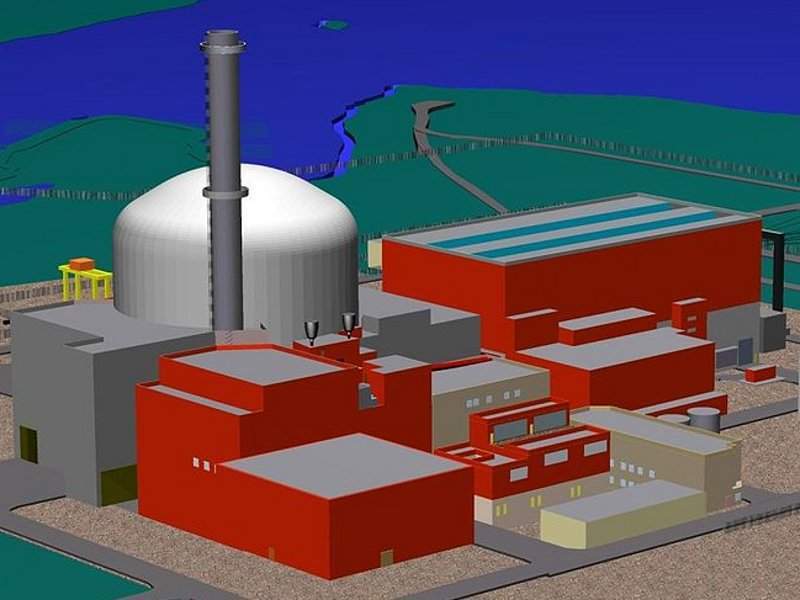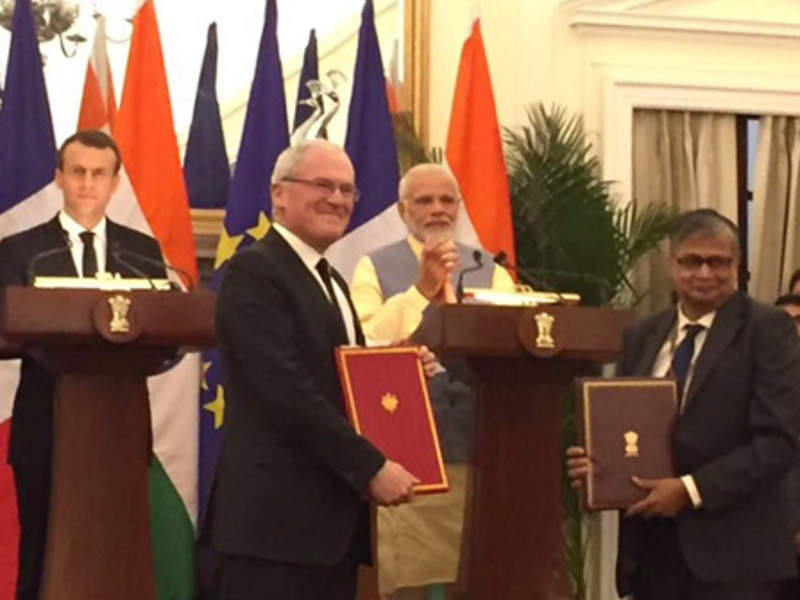Jaitapur nuclear power plant is a six-reactor nuclear power plant planned to be built 400km south of Mumbai, in Ratnagiri, Maharashtra, India, as part of the civil nuclear co-operation agreement between France and India.
To be owned and operated by India’s state-owned Nuclear Power Corporation of India (NPCIL), the Jaitapur nuclear facility will comprise six 1,650MW European pressurised reactors (EPR) supplied by France’s state-run power utility Electricite de France (EDF).
The gross installed capacity of the plant will be 9,900MW once all six reactor units are commissioned, making it the world’s biggest nuclear power facility.
The project is planned to be built in three phases, and the first two reactor units are in pre-construction stage as of July 2018.
Inspired by the Indian Government’s Make in India and Skill India policy campaigns, Jaitapur nuclear power project is envisioned to pave the way for knowledge sharing and participation of Indian companies in nuclear power generation.
Jaitapur nuclear plant development history
In 1985, Jaitapur was recommended to be one of the potential sites for nuclear power development in India.
Areva (now Framatome) and NPCIL completed a joint industrial feasibility study for six 1,000MW light water reactor (LWR) units at Jaitapur in April 2004.
However, later in the same year, the license to upgrade 1,000MW LWR to 1,650MW EPR was issued in France.
Jaitapur site was approved for first two reactor units by the Government of India in October 2005.
A civil nuclear co-operation bilateral agreement was signed between India and France in September 2008.
Areva and NPCIL signed a memorandum of understating (MoU) for the first two 1,650MW EPR reactor units at Jaitapur site, in February 2009.
The Government of India approved the Jaitapur site for construction of six 1,650MW EPRs in October 2009. NPCIL received environmental clearance for the project in November 2010.
EDF decided to take over Areva’s nuclear reactor manufacturing business in July 2015. EDF and NPCIL signed the MoU for the construction of Jaitapur nuclear power station in March 2016 and EDF issued the first technical-commercial proposal for the development of power station in the same year.
EDF and NPCIL signed an Industrial Way Forward Agreement for setting up six reactor units at Jaitapur in March 2018.
Jaitapur nuclear power plant make-up
Proposed to be built on 692ha of barren land on the west coast of Arabian sea, the Jaitapur nuclear power plant will comprise six European pressurised reactors (EPRs).
Each generating unit will consist of a nuclear island comprising a reactor building in the centre, four safeguard buildings and a fuel building all located in a common basement, and a conventional island comprising a turbine building that will house GE’s ARABELLE steam turbine generators as well as the components of steam-condensate-feed water-cycle, and a switchgear building adjacent to the turbine building.
The reactor building will comprise a cylindrical reinforced outer shield building and a cylindrical post-tensioned concrete inner containment building with 6mm-thick steel liner enclosing the reactor pressure vessel (RPV). The RPV contains the reactor core with 241 fuel assemblies.
The reactor coolant system for each generating unit will be based on conventional four-loop design with each loop constituting a steam generator, a pump and the associated pipes, connected to the pressure vessel.
The power station will use sea water for cooling and steam generation. Other facilities at the plant will include spent fuel storage facility, sea water treatment facilities and other auxiliary facilities including fire protection system, steam generator blowdown system and waste processing facilities.
European pressurised reactors
European pressurised reactors (EPRs) are third-generation pressurised water reactors with advanced safety features. EPR is designed to generate up to 1,660MW of electricity over its 60 years of operational life.
The world’s first EPR was commissioned at Taishan nuclear power plant in China in June 2018. Six EPRs were under-construction including two at Hinkley Point C in UK, two at Taishan NPP in China, one at Olkiluoto NPP in Finland, and one at Flamanville NPP in France, as of July 2018.
Transmission from Jaitapur nuclear power plant
The power generated from the Jaitapur NPP will be transmitted to the western region grid of the Power Grid Corporation of India (PGCIL).
PGCIL will be responsible for the construction of transmission lines from the power station.
Key players involved with Jaitapur nuclear power project
According to the industrial framework agreement for the project signed between NPCIL and EDF in March 2018, EDF will supply the EPR technology and be responsible for all engineering and procurement works for the first two reactor units of the Jaitapur nuclear power plant.
The agreement allows EDF to assign certain procurement and engineering works for the remaining four reactor units of the project to local companies.
The agreement allows for selecting 60% of the contractors to be involved in the last two reactor units from local companies.
EDF also signed two co-operation agreements with French and Indian industrial players, other than the framework agreement with NPCIL, in the same month.
The first agreement was signed with Assystem, Egis, Reliance and Bouygues to create an engineering platform for studies related to the project. The five companies will form a joint venture with EDF holding 51% interest and being responsible for engineering integration.
The second agreement was signed with Larsen & Toubro (L&T), AFCEN and Bureau Veritas, to establish a training centre to train local companies on technical standards applicable to the design and construction of equipment for the project.
GE will design the conventional island on each of the six reactor units and supply major components including steam turbines, power generators, condensers, moisture separator-reheater system, auxiliary systems and power evacuation systems, as part of the strategic co-operation agreement signed with EDF in June 2018.





